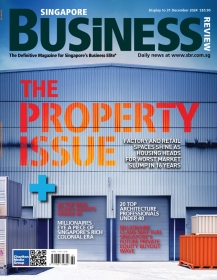
Time to start thinking about how to engage Singapore’s mobile consumer
With the world’s largest smartphone user base per capita – a 90 per cent penetration rate – Singapore is out in front as an important global leader in the mobile revolution. This strong embrace of advanced mobile technologies says a lot about the dynamic consumer market in Singapore. Yet, it also poses unique challenges for the companies serving or selling into this highly mobile consumer market.
Specifically, more than anywhere else, businesses in Singapore need to begin making it easier for customers to interact with them through their smartphones, and through the messaging channels mobile customers prefer.
Enabled by smartphones and social-networking technologies, the savvy consumer today expects much more flexibility in their communications experience. Increasingly, they expect to be able to engage in two-way dialogue.
And not just via email, but using email, SMS, IM and through social messaging as well – sometimes keeping the conversation in one channel, and other times skipping from email to SMS to IM and back. This is different from multi-channel, it’s cross-channel; and it’s how consumers worldwide are communicating with each other. Increasingly, it’s how they expect to engage with brands also.
But how can businesses support this kind of interaction? Service-oriented businesses in banking, retail and travel already have a hard time coordinating between their marketing and customer-care operations.
However, innovative cross-channel interactions are happening in social networks, like Facebook in the U.S., Netlog in Europe, and Kaixin001 in China. These companies keep their members informed of what’s going on with friends in their social grid through a range of automated notifications and message-driven workflows. A friend posts a comment on your photo and you get an SMS letting you know. Then you can respond back and post another comment via return SMS or via email.
This kind of message-driven workflow fully extends the social or brand experience outside the website. Companies in “conventional” industries like banking and travel/hospitality are taking cues from this new kind of interaction and implementing multi-channel communications (and sometimes cross-channel communications) in response to these trends.
They’re putting in place technologies that let them send and receive SMS and email communications from the same system, and dynamically transition these conversations between email and SMS according to preference decisions based on content and context.
Done well, this kind of messaging enables “context-aware” interactions that can provide more effective customer care, as well as beneficial marketing opportunities. Say a bank sends out a notification of suspicious activity on an account that allows the customer to send a “please provide more information” request back.
The fraud alert system could then send details on the transactions, or have fraud team members follow up – either through another round of triggered messages or through direct contact. Additionally, the customer could initiate a conversation through a click-to-call or a click-to-IM session. Once the suspicious activity has been resolved, it would be an ideal opportunity for the bank to follow up with an email offer for a free trial on their bankcard security programme.
The trick is having an intelligent messaging capability that can both interface with multiple backend systems where account data lives and handle outgoing and incoming messages in email, SMS/MMS and other formats.
For smartphone users communicating in this way, there’s no going back to single-stream messaging. Businesses, which overcome these obstacles and follow customer conversations across channels, are likely to make rapid advances in serving the growing mobile consumer base and see real gains in customer loyalty and marketplace advantage.
David Harvey, Senior Vice President of International Sales and Business Development, Message Systems
David's focus is on forging mutually beneficial partnerships with enabling system integrators, consultancies, resellers and distributors for all Message Systems solutions. David's dynamic style and solid background in messaging software, telecommunication and managed service companies worldwide brings an understanding of both enterprise and service provider environments as well as the global challenges inherent in our industry. His commitment to our partner-centric ethic and his solutions based approach to his initiatives resonate strongly with both our current and prospective partners.
Before joining Message Systems, David ran Alliances for Bizanga, a provider of anti-spam infrastructure to ISPs and telcos in North America and Europe. Prior to that, he managed indirect and carrier sales for Savvis, a leading provider of IT Infrastructure-as-a-Service, and managed hosting and fully managed network solutions. Previously, David was with Cable & Wireless in a variety of sales, business development and general management roles across multiple continents. Before Cable & Wireless, he was responsible for new vendor management at Azlan Europe for high tech companies expanding into the EU marketplace.
























 Advertise
Advertise






